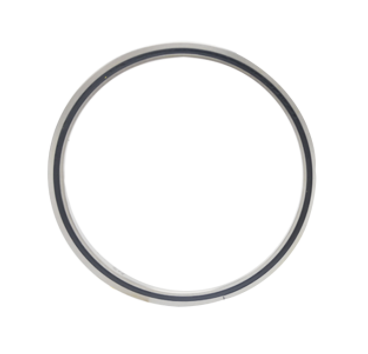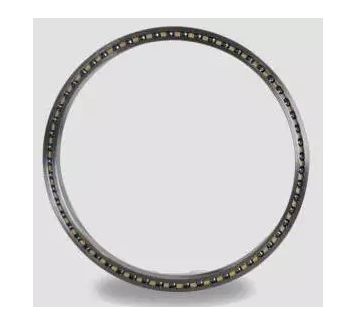Structural features and series models of equal section thin-walled bearings
- 2022/9/5 8:44:04
The bearing of an industrial robot is one of its key accessories. It needs to have a high rigidity, high rotational accuracy and composite bearing capacity while the overall dimensions of the robot bearing are miniaturized to the greatest extent.Two types of bearings commonly used in industrial robots, equal-section thin-walled crossed roller bearings and equal-section thin-walled ball bearings, are most suitable for joints or rotating parts of industrial robots, direct drive motors, medical machines, measuring instruments and other fields.
1. Equal section thin-walled crossed roller bearings

The cylindrical rollers of the HRAU series of equal-section thin-walled crossed roller bearings are arranged in a crisscross pattern on the top of the V-roller, and the rollers are separated by spacers. It can bear various loads such as axial load, radial load and overturning moment. In addition, since the inner and outer rings are of integral structure, it can be used for the rotation of the inner ring as well as the rotation of the outer ring.
2. Equal section thin-walled ball bearings

Deep groove ball bearings: C-type deep groove ball bearings are single row deep groove ball bearings with ultra-deep grooves (raceway groove depth = 25% of ball diameter) in the inner and outer rings.
Angular contact ball bearings: The difference between A-type angular contact ball bearings and C-type bearings is that A-type bearings have sufficient radial clearance and can form a sufficient contact angle to bear axial loads. Due to its unidirectional load capability, the bearing needs to be mounted symmetrically with other bearings to set and maintain the contact angle while minimizing axial movement when subjected to alternating axial loads.
Four-point contact ball bearing: The difference between the X-type four-point angular contact ball bearing and the A and C-type bearings is the shape of its ball groove. The deep groove depth and four-point contact structure allow the bearing to withstand radial, axial and torque loads, similar to a pair of Type A bearings paired back-to-back.
Our company supports non-standard and customized design and processing of various types of high-precision bearings within the range of inner diameter 20mm to outer diameter 2300mm. We cooperate with many colleges and universities, machine tool companies, mechanical research institutes and scientific research institutions all year round to carry out joint development of major equipment and assist customers in sample and mass production. For further information, please call 0379-63086299




